How I Assembled a Silent Computer
Many years ago, I could easily sleep half a meter away from the buzzing computer, but over time it became obvious that extraneous noises greatly interfere with productive work. Since then, I began my experiments on building a silent computer.

Sources of noise in the computer are:
1) fans of the power supply, processor heatsink, graphics card at least. As a maximum, fans for blowing and blowing air, on HDD and other devices can still stand in addition;
2) hard drives;
3) vibration of the case elements due to the mechanical operation of fans and hard drives;
4) paranoids can add to this list a high-frequency squeak of various components - power supplies for the computer and peripherals, the motherboard, and more.
To eliminate all of the listed noise sources in my computer, I did the following:
Everything is simple here - passive air or water cooling. I chose the first option.
For the processor , these are heat sinks that are effective in removing heat from companies such as Scythe , Nofan , Noctua and others, there are many of them. One of the characteristics of the heatsink is the dissipated power of the processor, so you can easily choose the option that suits your processor. Often the disadvantage of such radiators is their large size, which can cause problems with overlapping the near PCI-e slot. The second feature - as a rule, processors from Intel are cooler than processors from AMD, which somewhat limits the choice. Acceleration also greatly affects heat dissipation, alas.
Such radiators usually look something like this:
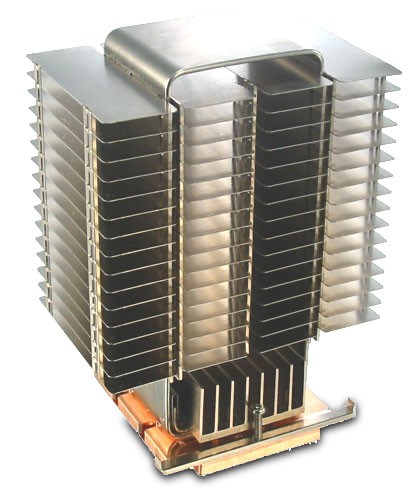
Or so (I have just one):
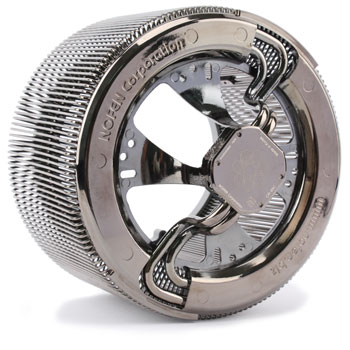
Video card - the integrated video is enough for my tasks, so the problem with the video card turned out to be the easiest. If you need a powerful silent card, there are two options - a moderately powerful card with passive cooling, for example, ASUS HD7750-DCSL-1GD5 , or a more powerful card with a water block.
Power supply unit . Previously, I just solved the noise problem of the power supply - I turned off the fan. 2 broken BPs with an interval of one and a half years each forced to reconsider the approach to the problem. In the end, I bought a passive-cooled power supply Nofan P-400A Silent 400W Fanless Power Supply Unit . It looks like this:

There is also a completely passive version of the Chieftec GPS-500C 500W ATX. In addition, there are many options for PSUs with temperature sensors that automatically change the fan speed, with a remote panel with manual fan speed control and options with semi-passive cooling when the fan starts to work only at a certain load level.
If options with a passive PSU do not suit you (most likely for financial reasons due to their high cost), you can reduce noise by replacing the fan with a less noisy one. Very quiet fans are produced by all the same companies - Scythe, Noctua, Acousti, Nanoxia. The disadvantages of such fans may be a higher price and low flow.
In addition, the fan can be connected not to the power supply, but to the motherboard, which will allow you to control its speed. The only problem is, most likely, the loss of warranty.
Hard drives produce noise and vibration, which in turn makes the chassis rustle. A radical solution is to replace all HDDs with SSDs. It will be noiseless, energy efficient, vibration resistant, but too expensive. I solved this problem like this: SSD for the system and 2 2.5-inch HDD green-series 5400 RPM in special vibration and sound-isolating boxes. They are called HDD silencer or silentbox. The principle of operation is simple - a steel box in which the HDD is placed, and gaskets on top and bottom to damp vibrations, sound insulation and heat dissipation. In such silent boxes, the hard drive is not audible at all. At least 2.5 inches for sure. As usual, the price is sad - about 100 euros for 3.5 inch drives and 1100 rubles for 2.5 inch. But the thing, in my opinion, is definitely worth the money.
It looks like this:
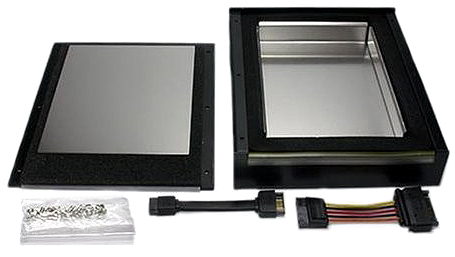
I used to think that a good case for a silent computer is such a case that does not produce noise at all from inside the system unit. Subsequently, it turned out that this is not entirely true. The case must exclude vibration and take into account small nuances:
1) the location of the PSU, which does not interfere with the natural circulation of air. Typically, this is at the bottom of the rear panel with a direct connection to the power supply. There are still options for the location of the PSU from above in the area where conventional cases have drives with indirect connection of the power cable (there are such cases, for example, in Nanoxia);
2) the presence of holes in the upper part of the case with passive air cooling and holes for hoses with water;
3) more robust design, eliminating the occurrence of any vibration;
4) often in such cases, hard drives are mounted in special vibration damping baskets.
Such cases are in the line of Antec, Nanoxia, Fractal Design, Cooler Master, Silver Stone and many other manufacturers.
Personally, I have the good old Antec Mini P180 mATX form factor. The case suits absolutely everyone, but not without jambs - the lower position of the PSU does not allow an extension cord to reach the additional power connector on the motherboard, and the hard drive baskets are not good friends with silent blocks installed in them.
The second drawback of the bottom location of the PSU is the orientation of the case to the PSU with active cooling, because the partition between the PSU compartment and the compartment with PC components interferes with efficient heat dissipation.
It looks like this:
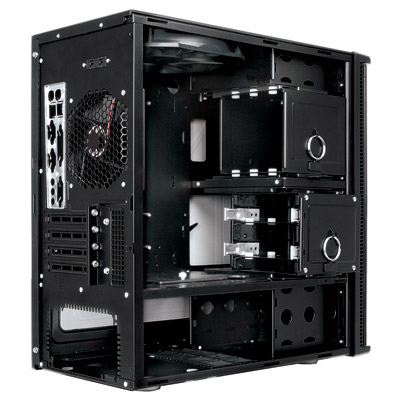
High-frequency squeak / noise components
This unpleasant squeak, as a rule, is characteristic for cheap components and PSU peripherals. My knowledge does not allow me to say anything about the reasons, nor about the ways to deal with such negative aspects. The forums are actively discussing various options for the collective farm with the filling of something there with a special varnish, replacing parts and other things. I can give only one piece of advice - as a rule, components of products from the lower price category squeak and crack.
I think that a silent computer is great when you determine that the computer is turned on not by the noise from it, but by the burning lights. Not everything, of course, is so cloudless. I need a computer for standard office programs, heavy applications with a constant 100% processor load I use very rarely and for a short time. Another problem for many is a weak video. Someone needs it. For me and the third heroes, the built-in video is enough.
An important aspect in the issue of a silent computer is the issue of the price of the necessary components. Speaking roundly, a suitable case costs 5-8 thousand rubles, a radiator for a processor - 1.5-4 tr., Bushes for HDD - 1-3 tr. apiece, BP - 4-6 tr., fan - 500-800 p., there are restrictions in the choice and use of processors and video cards, but for me personally they are all insignificant compared to the fact that my computer does not make noise at all.
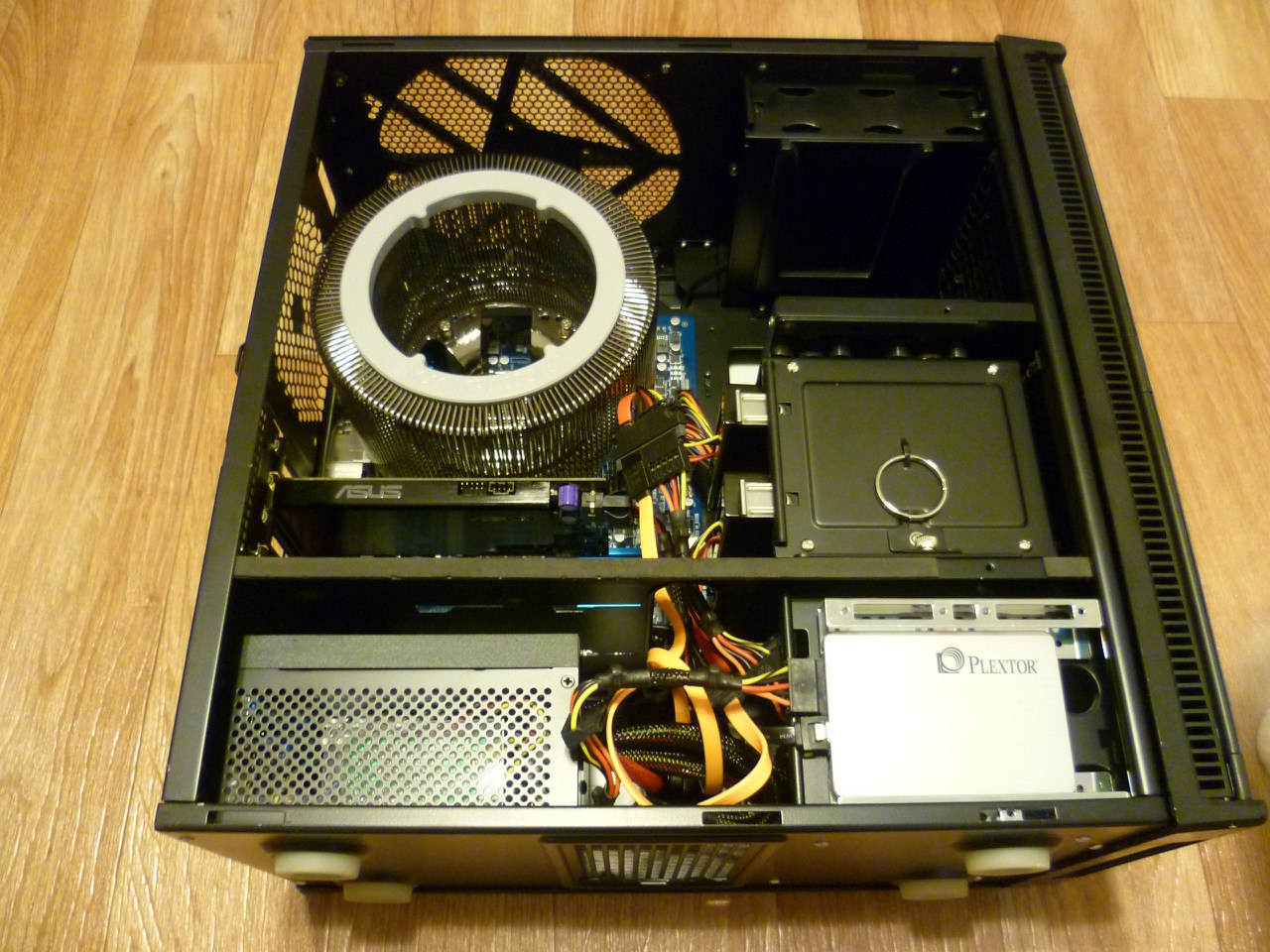
Everything is simple here - the unnecessary rear and upper fans with speed controllers are removed from the case, the radiator - Nofan CR-95C Pearl Black IcePipe 95W Fanless CPU Cooler, the processor TDP - 77 W, the upper basket is removed as unnecessary, in the middle are 2.5 2.5 HDD in silent boxes, all wires in the lower basket, integrated video card, one slot used by a sound card, that's all.
Office tasks, surfing

100% processor load
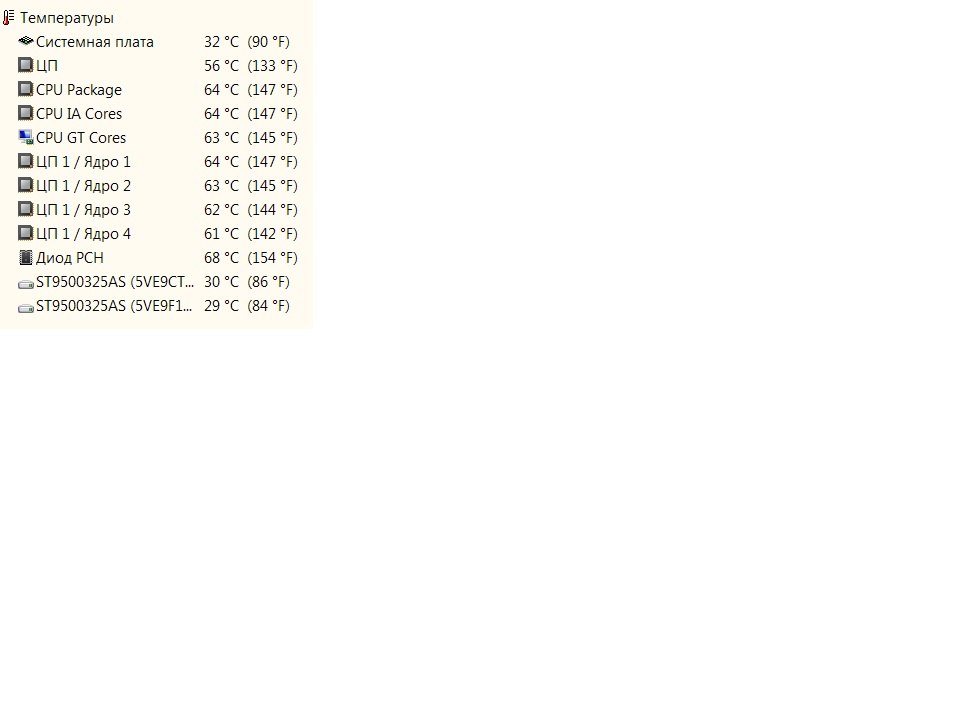
This is my first post. I hope he is not completely terrible and will be of interest to someone. Thanks for attention.
UPDATE1 : in the comments they suggested writing the prices of the equipment used by me, I am correcting. For me: a
radiator CR-95C Pearl Black IcePipe 95W Fanless CPU Cooler (4000 rubles) + shipment from England
PSU Nofan P-400A Silent 400W Fanless PSU (5500) + shipment from England
case Antec mini P180 (not for long, 5 years ago I bought it for about 7000, if I do not confuse anything).
Chassis without processor - Intel i7-3770
UPDATE2: even in the comments, they suggested compiling a table of silent or quiet components, I alone, most likely, will not pull it in time, but if someone agrees to help. then, I think, everything will work out, so I will be glad if someone responds

Some obvious facts
Sources of noise in the computer are:
1) fans of the power supply, processor heatsink, graphics card at least. As a maximum, fans for blowing and blowing air, on HDD and other devices can still stand in addition;
2) hard drives;
3) vibration of the case elements due to the mechanical operation of fans and hard drives;
4) paranoids can add to this list a high-frequency squeak of various components - power supplies for the computer and peripherals, the motherboard, and more.
How I defeated the noise
To eliminate all of the listed noise sources in my computer, I did the following:
Fans
Everything is simple here - passive air or water cooling. I chose the first option.
For the processor , these are heat sinks that are effective in removing heat from companies such as Scythe , Nofan , Noctua and others, there are many of them. One of the characteristics of the heatsink is the dissipated power of the processor, so you can easily choose the option that suits your processor. Often the disadvantage of such radiators is their large size, which can cause problems with overlapping the near PCI-e slot. The second feature - as a rule, processors from Intel are cooler than processors from AMD, which somewhat limits the choice. Acceleration also greatly affects heat dissipation, alas.
Such radiators usually look something like this:

Or so (I have just one):

Video card - the integrated video is enough for my tasks, so the problem with the video card turned out to be the easiest. If you need a powerful silent card, there are two options - a moderately powerful card with passive cooling, for example, ASUS HD7750-DCSL-1GD5 , or a more powerful card with a water block.
Power supply unit . Previously, I just solved the noise problem of the power supply - I turned off the fan. 2 broken BPs with an interval of one and a half years each forced to reconsider the approach to the problem. In the end, I bought a passive-cooled power supply Nofan P-400A Silent 400W Fanless Power Supply Unit . It looks like this:

There is also a completely passive version of the Chieftec GPS-500C 500W ATX. In addition, there are many options for PSUs with temperature sensors that automatically change the fan speed, with a remote panel with manual fan speed control and options with semi-passive cooling when the fan starts to work only at a certain load level.
If options with a passive PSU do not suit you (most likely for financial reasons due to their high cost), you can reduce noise by replacing the fan with a less noisy one. Very quiet fans are produced by all the same companies - Scythe, Noctua, Acousti, Nanoxia. The disadvantages of such fans may be a higher price and low flow.
In addition, the fan can be connected not to the power supply, but to the motherboard, which will allow you to control its speed. The only problem is, most likely, the loss of warranty.
HDD
Hard drives produce noise and vibration, which in turn makes the chassis rustle. A radical solution is to replace all HDDs with SSDs. It will be noiseless, energy efficient, vibration resistant, but too expensive. I solved this problem like this: SSD for the system and 2 2.5-inch HDD green-series 5400 RPM in special vibration and sound-isolating boxes. They are called HDD silencer or silentbox. The principle of operation is simple - a steel box in which the HDD is placed, and gaskets on top and bottom to damp vibrations, sound insulation and heat dissipation. In such silent boxes, the hard drive is not audible at all. At least 2.5 inches for sure. As usual, the price is sad - about 100 euros for 3.5 inch drives and 1100 rubles for 2.5 inch. But the thing, in my opinion, is definitely worth the money.
It looks like this:

Housing
I used to think that a good case for a silent computer is such a case that does not produce noise at all from inside the system unit. Subsequently, it turned out that this is not entirely true. The case must exclude vibration and take into account small nuances:
1) the location of the PSU, which does not interfere with the natural circulation of air. Typically, this is at the bottom of the rear panel with a direct connection to the power supply. There are still options for the location of the PSU from above in the area where conventional cases have drives with indirect connection of the power cable (there are such cases, for example, in Nanoxia);
2) the presence of holes in the upper part of the case with passive air cooling and holes for hoses with water;
3) more robust design, eliminating the occurrence of any vibration;
4) often in such cases, hard drives are mounted in special vibration damping baskets.
Such cases are in the line of Antec, Nanoxia, Fractal Design, Cooler Master, Silver Stone and many other manufacturers.
Personally, I have the good old Antec Mini P180 mATX form factor. The case suits absolutely everyone, but not without jambs - the lower position of the PSU does not allow an extension cord to reach the additional power connector on the motherboard, and the hard drive baskets are not good friends with silent blocks installed in them.
The second drawback of the bottom location of the PSU is the orientation of the case to the PSU with active cooling, because the partition between the PSU compartment and the compartment with PC components interferes with efficient heat dissipation.
It looks like this:

High-frequency squeak / noise components
This unpleasant squeak, as a rule, is characteristic for cheap components and PSU peripherals. My knowledge does not allow me to say anything about the reasons, nor about the ways to deal with such negative aspects. The forums are actively discussing various options for the collective farm with the filling of something there with a special varnish, replacing parts and other things. I can give only one piece of advice - as a rule, components of products from the lower price category squeak and crack.
Personal impressions
I think that a silent computer is great when you determine that the computer is turned on not by the noise from it, but by the burning lights. Not everything, of course, is so cloudless. I need a computer for standard office programs, heavy applications with a constant 100% processor load I use very rarely and for a short time. Another problem for many is a weak video. Someone needs it. For me and the third heroes, the built-in video is enough.
An important aspect in the issue of a silent computer is the issue of the price of the necessary components. Speaking roundly, a suitable case costs 5-8 thousand rubles, a radiator for a processor - 1.5-4 tr., Bushes for HDD - 1-3 tr. apiece, BP - 4-6 tr., fan - 500-800 p., there are restrictions in the choice and use of processors and video cards, but for me personally they are all insignificant compared to the fact that my computer does not make noise at all.
Finally, a photo of my system unit and screenshots with sensor readings

Everything is simple here - the unnecessary rear and upper fans with speed controllers are removed from the case, the radiator - Nofan CR-95C Pearl Black IcePipe 95W Fanless CPU Cooler, the processor TDP - 77 W, the upper basket is removed as unnecessary, in the middle are 2.5 2.5 HDD in silent boxes, all wires in the lower basket, integrated video card, one slot used by a sound card, that's all.
But the indicators of sensors during normal use of the computer and at 100% processor utilization
Office tasks, surfing

100% processor load

This is my first post. I hope he is not completely terrible and will be of interest to someone. Thanks for attention.
UPDATE1 : in the comments they suggested writing the prices of the equipment used by me, I am correcting. For me: a
radiator CR-95C Pearl Black IcePipe 95W Fanless CPU Cooler (4000 rubles) + shipment from England
PSU Nofan P-400A Silent 400W Fanless PSU (5500) + shipment from England
case Antec mini P180 (not for long, 5 years ago I bought it for about 7000, if I do not confuse anything).
Chassis without processor - Intel i7-3770
UPDATE2: even in the comments, they suggested compiling a table of silent or quiet components, I alone, most likely, will not pull it in time, but if someone agrees to help. then, I think, everything will work out, so I will be glad if someone responds
